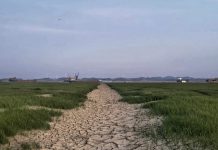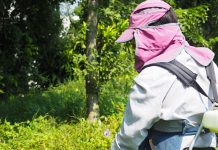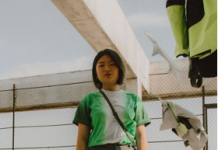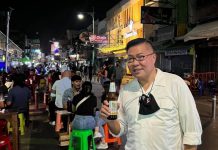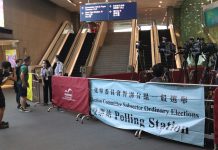As knowledge of birds has improved, so have conservation efforts and awareness. In 2015, the Convention on Biological Diversity — which is aimed at the conservation and sustainable use of biological diversity — will be extended to Hong Kong.
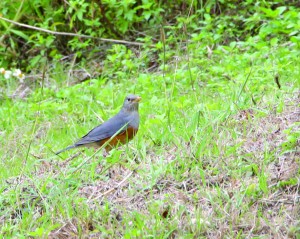
Smith expects it will mark a huge improvement for conservation efforts in Mai Po because some species which are not currently protected in Hong Kong will become so under this convention. He hopes it will give a foundation to arguments for conservation in the recent controversy about developing the country parks.
Smith says officials should think of the public side of conservation and the involvement of people and the community. For example, they need to balance the views of those who want 100 per cent protection from development with those of villagers who take opposing positions.
While Mai Po is a mostly wild reserve protected by an international convention, the Hong Kong Wetland Park in Tin Shui Wai serves as a recreational park with conservation and educational purposes. Its artificial habitats have been created to imitate nature and to educate. The park provides birdwatching equipment, tours, workshops and exhibitions for visitors. There are bird hides — wooden structures built some distance away from the wetlands —where visitors can learn to watch birds without disturbing them.
Plans are also afoot to create another birdwatching hotspot by transforming Long Valley into the Long Valley Nature Park (LVNP).
Jacqueline Cheuk Ching-ping from the Planning Department says the agricultural land north of Yin Kong and Tsung Pak Long and south of the confluence of the Sheung Yue River and Shek Sheung River are wetland areas of very high ecological value. This area of 37 hectares has been designated as LVNP to provide long-term conservation. However, details about habitat creation and management plans are not yet available.
Cheuk stresses the primary purpose of the LVNP is for conservation, though a visitor centre and education centre on wetlands and agriculture development are also proposed.
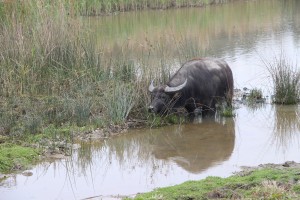
Lo Wai-yan, the general manager of the Hong Kong Bird Watching Society, is unsure about the impact LVNP will have on conservation because of the lack of details. But he is worried about how the proposed development of the Northeast New Territories will affect Long Valley in general.
The development of Kwu Tong which is only 1.9 km from Long Valley will bring an influx of people and cause great disturbance to the wildlife in the area, as well as light and noise pollution.
In general, Lo says Hong Kong is a place where birds are well protected in theory and the government follows international laws well. However, in practice, the picture is not always so rosy. Among the birdwatchers, the consensus is that the government lacks the required vision to plan and conserve birds and their natural habitats.
For example, says Lo, Hong Kong still allows the legal trade in birds. He says this encourages the illegal hunting of birds. In the process of hunting birds and transporting them to points of sale, many birds die. He wants the government to ban the trade.
Although the situation is better in Hong Kong than in the Mainland, where people will eat, shoot and even poison wild birds, there are also people here who harm birds without being aware there is anything wrong with their behaviour.
For instance, says Lo, there is a growing number of photographers taking pictures of birds. While most birdwatchers are satisfied when they can capture a picture of a bird, some photographers will go to extra lengths to get what they consider the best shot. They may stick worms on branches or feed them to lure them to stay in shot. Sometimes they play bird whistles on mobile phones to attract birds.
These practices put the birds at risk — feeding them may make them lose their skills at catching prey; the whistles may distract them from finding mates or the rest of their flock during migration. Besides, too much human interaction may cause the birds to lose their fear of people.
“[What happens to] a bird that isn’t afraid of humans? Well, it may be okay in Hong Kong, but in another place they’d be dead!” exclaims Lo. He says this shows the need for formal education on nature conservation in Hong Kong.
At the same time, Lo appreciates that birdwatching culture is becoming more inclusive and popular. There are elderly people getting involved and volunteering to provide birdwatching tour services to the public in Kowloon Park and Hong Kong Park. Among birdwatching circles, there are young people called tweeters who are keen to watch birds around coastal areas during typhoons, including those swept off course by storms from as far away as the Philippines.
To become a birdwatcher, all you need is a pair of binoculars, and these can range in price from a few hundred dollars to thousands. Once you look through your binoculars, says Lo, “your sight changes from wide view to microscopic… All of a sudden you recognise the tiny things which were there in the first place. You will find the world has become more lively and colourful.” And that, for Lo, is what birdwatching is all about.
Edited by Yoyo Chan










